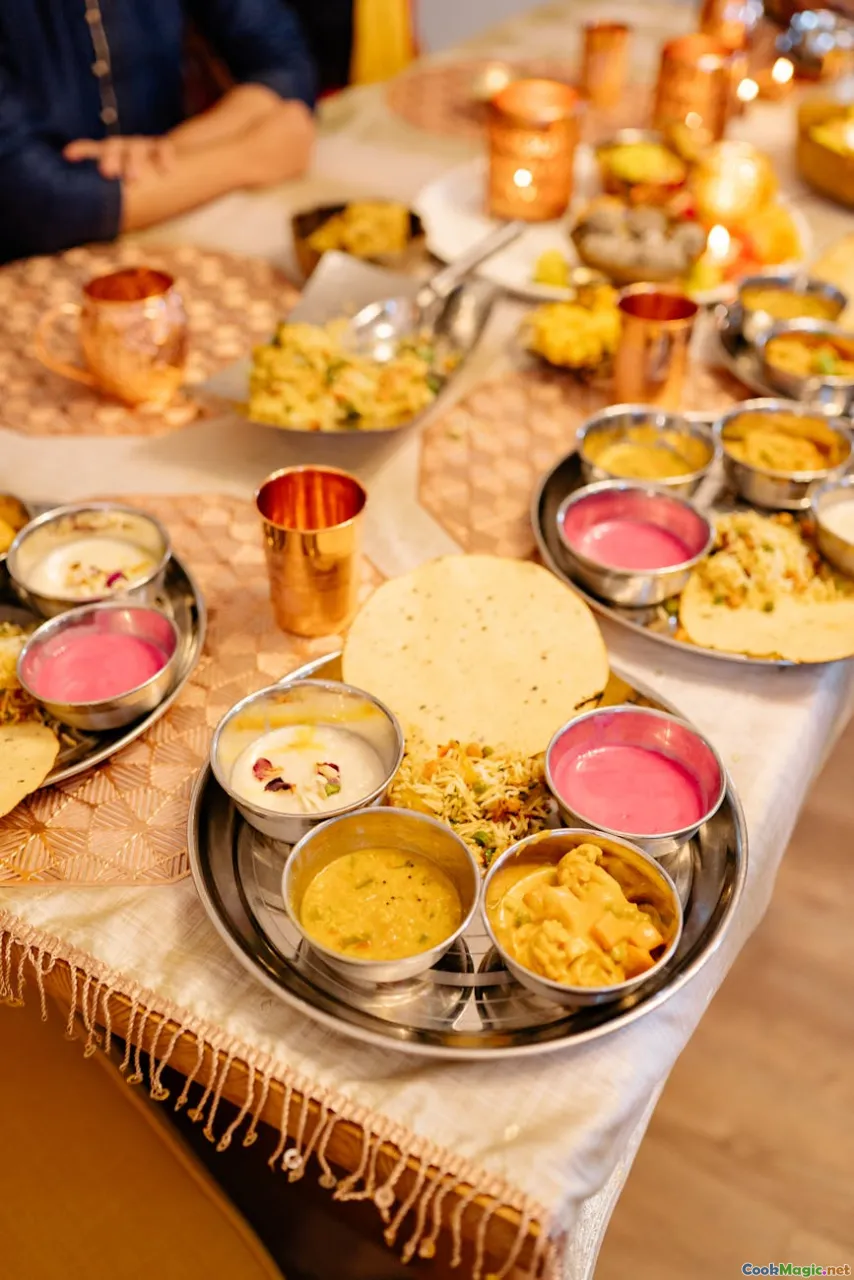Veganizing Traditional Norwegian Dishes
8 min read Discover how to reimagine classic Norwegian dishes through vegan adaptations that honor tradition while embracing modern plant-based living. April 22, 2025 18:55
Veganizing Traditional Norwegian Dishes
Imagine standing on a misty fjord, the crisp air filled with the aroma of smoked fish and freshly baked bread. Norwegian cuisine, with its roots deeply embedded in the rugged landscapes and icy waters of the North, is a tapestry woven with hearty, comforting flavors and age-old traditions. Yet, as the world shifts toward more sustainable and compassionate eating, a tantalizing question arises: How can we honor Norway’s rich culinary heritage while embracing a vegan lifestyle?
Welcome to the fascinating journey of veganizing traditional Norwegian dishes—a blend of cultural reverence, culinary innovation, and heartfelt experimentation. This article explores not only the how but also the why behind transforming these beloved recipes into plant-based marvels, inviting you to savor the taste of Norway without compromise.
The Cultural and Historical Tapestry of Norwegian Cuisine
Norwegian cuisine is a mirror of its environment—harsh yet beautiful, simple yet profound. Historically, Norwegians relied heavily on preserved foods—smoked, dried, pickled—to survive long, brutal winters. Dishes like rakfisk(fermented fish),lutefisk (lye-treated fish), and hearty stews reflect ingenuity in preservation methods.
Seafood dominates the culinary landscape—salmon, cod, herring—each with methods passed down through generations. Land-based ingredients such as root vegetables, berries, and game meat also feature prominently, especially in rural areas.
Embracing this heritage while shifting toward veganism might seem challenging, but it offers an exciting opportunity to reinterpret these dishes with a fresh, compassionate perspective.
Why Veganize Norwegian Dishes?
Veganizing traditional foods isn’t just about replacing animal ingredients; it’s about respecting the cultural significance, flavors, and textures that define these dishes. It’s a bridge that connects past and future, honoring traditions while fostering sustainability and animal welfare.
Moreover, Scandinavian countries have seen a rise in plant-based eating, driven by environmental concerns and health awareness. This movement opens the door for innovative adaptations that retain the soul of Norwegian cuisine.
Key Ingredients and Substitutes
To successfully veganize Norwegian dishes, understanding which ingredients to substitute is crucial:
- Fish and seafood: Use smoked or marinated mushrooms, jackfruit, or tofu to mimic the flaky texture and savory flavors.
- Dairy: Incorporate plant-based milks, vegan cheeses, and nut-based creams.
- Preserved ingredients: Use fermented vegetables, seaweed, or umami-rich mushrooms for depth.
- Traditional grains and root vegetables: Rye, barley, potatoes, carrots, and turnips serve as hearty staples.
Classic Norwegian Dishes Reimagined as Vegan
1. Vegan Rakfisk
**Traditional:**Fermented trout served with flatbread and sour cream.**Vegan Version:**Marinate thinly sliced king oyster mushrooms or eggplant in a brine of seaweed, lemon, and apple cider vinegar, allowing them to develop a tangy, umami-rich flavor reminiscent of fermented fish. Serve on crisp flatbread with vegan sour cream made from cashews or coconut cream, topped with fresh dill and red onion.Sensory experience: The chewy texture of mushrooms, combined with the tangy marinade, offers a complex flavor profile—salty, sour, and savory—evoking the essence of traditional rakfisk.
2. Lutefisk with a Plant-Based Twist
**Traditional:**Dried cod treated with lye, then cooked until tender.**Vegan Version:**Utilize king oyster mushrooms or thick slices of zucchini, soaked in a solution of baking soda and water to mimic the gelatinous texture. Cook gently in a broth infused with seaweed or kelp to impart the umami flavor characteristic of lutefisk. Serve with boiled potatoes, vegan mustard sauce, and steamed vegetables.Sensory experience: The mushroom's silky texture and ocean-inspired broth evoke the nostalgic comfort of lutefisk without any animal products.
3. Norwegian Lamb Stew (Vegan Version)
**Traditional:**Slow-cooked lamb with root vegetables and herbs.**Vegan Version:**Use hearty seitan or tempeh chunks simmered with carrots, parsnips, potatoes, and onions in a rich vegetable broth seasoned with thyme, bay leaves, and a splash of red wine. Incorporate mushrooms for added umami.Sensory experience: The tender seitan absorbs the flavors, offering a satisfying, meaty bite, complemented by the sweet earthiness of roasted root vegetables.
4. Kvikk Lunsj-inspired Vegan Chocolate Bar
**Traditional:**Norwegian chocolate coated wafer snack.**Vegan Version:**Craft a layered chocolate bar with crispy rice or vegan wafer biscuits, coated in dark or milk vegan chocolate. Incorporate hints of sea salt or Norwegian berries like lingonberries for a regional twist.Sensory experience: Crunchy, smooth, and slightly salty, capturing the nostalgic joy of this beloved treat.
Personal Reflections and Culinary Adventures
My journey into veganizing Norwegian dishes has been both challenging and exhilarating. I recall experimenting with fermented mushroom-based 'rakfisk' during a chilly winter evening, the aroma filling my kitchen with oceanic notes. The process of balancing the tangy marinade and achieving the right chewy texture felt akin to a culinary puzzle—one that rewarded patience and creativity.
Sharing these dishes with friends unfamiliar with vegan cuisine often sparks surprise and delight. They remark how these plant-based versions retain the spirit and soul of Norwegian comfort foods, proving that tradition and innovation can coexist beautifully.
Embracing the Future While Honoring the Past
Veganizing Norwegian dishes is more than a trend; it’s a testament to a culture willing to adapt and evolve without losing its identity. It invites us to cherish the flavors and stories behind each recipe while imagining new possibilities.
Whether you’re a lifelong Norwegian, a curious food lover, or a passionate vegan, this culinary renaissance offers a way to connect deeply with Norway’s heritage—one compassionate, flavorful bite at a time.
Final Thoughts
The art of veganizing traditional Norwegian dishes is a dance between respect and innovation. It challenges us to think creatively, respect cultural roots, and embrace a sustainable, plant-based future. So next time you crave the hearty flavors of Norway, remember: with a touch of imagination, you can enjoy these beloved dishes guilt-free and with new layers of appreciation.
Happy vegan exploring!
Embark on your own culinary adventure—discover, experiment, and savor the timeless flavors of Norway reimagined through vegan eyes.









